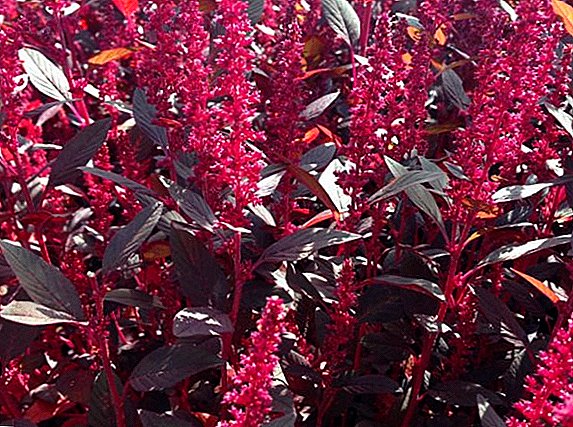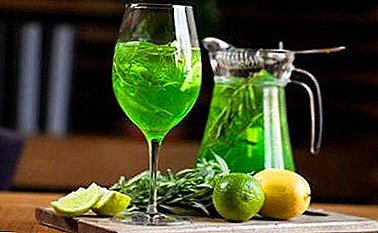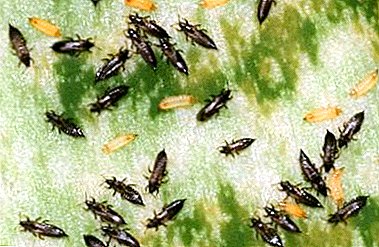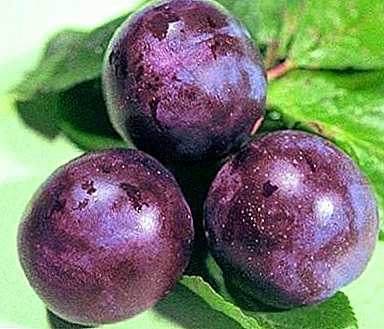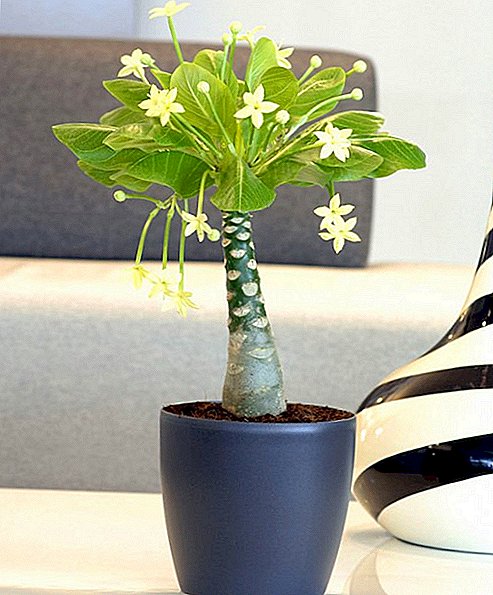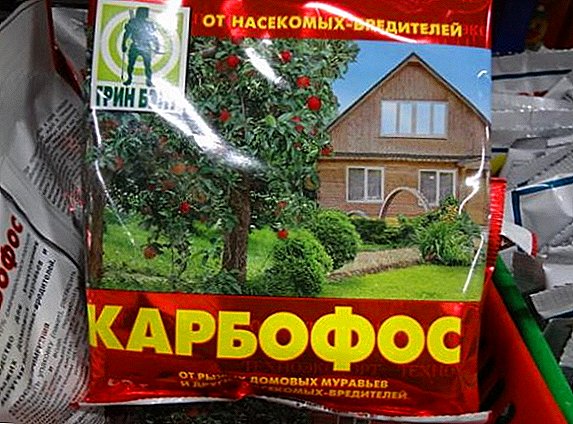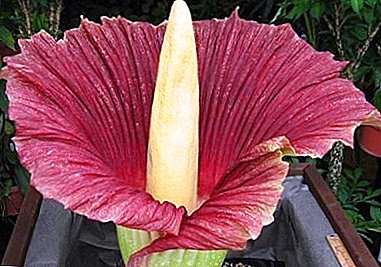 Wine growing for a long time was the privilege of the southern countries. The fact is that this agriculture is considered to be thermophilic. But thanks to the work of breeders, the cultivation of grapes in the Urals, its planting and cultivation became real. Now viticulture is not only well developed on the territory of the Urals, but also shows a high yield coefficient.
Wine growing for a long time was the privilege of the southern countries. The fact is that this agriculture is considered to be thermophilic. But thanks to the work of breeders, the cultivation of grapes in the Urals, its planting and cultivation became real. Now viticulture is not only well developed on the territory of the Urals, but also shows a high yield coefficient.
Did you know? Grapes are an ancient crop. According to scientists, its introduction into culture began in Asian countries (Pakistan, Iran). Found Egyptian hieroglyphs depicting leaves and bunches of grapes. This indicates that many thousands of years ago it was considered a useful agricultural crop.
Grapes in the Urals: the choice of varieties for growing
 The main criterion for the choice of Ural grape varieties is frost resistance and early ripening. It is better to choose zoned varieties. They are adapted to specific climatic conditions. The quality of the seedling depends on the growth of the bush and the harvest. It is also necessary to decide whether you need a table or a technical look. The first is designed for food and sales, and the second - for making wine. When choosing, pay attention to the sapling. It is better to buy from proven growers who have been growing it for years. Considered excellent seedlings with multiple shoots. Suitable varieties ripening 100-130 days and tolerate frost below -40 ° C. Cold-resistant grape varieties for the Urals:
The main criterion for the choice of Ural grape varieties is frost resistance and early ripening. It is better to choose zoned varieties. They are adapted to specific climatic conditions. The quality of the seedling depends on the growth of the bush and the harvest. It is also necessary to decide whether you need a table or a technical look. The first is designed for food and sales, and the second - for making wine. When choosing, pay attention to the sapling. It is better to buy from proven growers who have been growing it for years. Considered excellent seedlings with multiple shoots. Suitable varieties ripening 100-130 days and tolerate frost below -40 ° C. Cold-resistant grape varieties for the Urals:
- "Samokhvalovich" - early (110 days);
- "Olga" or "Beauty of the North" - early (110 days);
- "Negro" - medium (125 days);
- "Lydia" - medium early (125 days);
- "White Muscat Shatilova" - medium early (130 days).
 The grapes in the southern Urals are very picky, its planting and care need special care and labor of the owner. With proper care, the result will not take long.
The grapes in the southern Urals are very picky, its planting and care need special care and labor of the owner. With proper care, the result will not take long.
The question of how to grow grapes in the Urals for beginners may arise from many who want to engage in viticulture, but who do not have any experience in this matter. And it is worth starting with just a few species. Let them be different in taste and color. When choosing a sapling, pay attention to the root was not overdried. It is better to choose seedlings whose root system is packed in a plastic bag. They will not starve and take root when landing. When the harvest period comes, you can decide which variety suits you best. Only on the 6-7th year there is an opportunity to see the entire yield of a certain variety. Depending on the quality of the grapes, you can harvest up to 8 kg of crop from one bush.
Did you know? For beginners suitable varieties: "Aleshenkin", "In Memory of Shatilova", "In Memory of Dombrovskaya". They are not whimsical and do not require special care.
 The grapes in the southern Urals is rapidly gaining popularity, its varieties are more and more known and often appear new. Already have up to 500 species. Among them, a special place is occupied by species that are not susceptible to fungal diseases.
The grapes in the southern Urals is rapidly gaining popularity, its varieties are more and more known and often appear new. Already have up to 500 species. Among them, a special place is occupied by species that are not susceptible to fungal diseases.
Features planting grapes in the Urals
Once a variety is selected, many questions arise. One of them, how to plant grapes in the Urals. It is necessary to choose the most suitable place for disembarkation and prepare the landing pit. In principle, this culture can grow everywhere, if it is well cared for. But the expected harvest will be scarce. Planting grapes in the Urals is possible and quite real. The main thing is to purchase a quality sapling and follow the rules of planting.
Choosing a landing site
 The yield of the bush depends on where it is planted. The location chosen should be as sunny, dry and open as possible. The soil is loose, nutritious. It is better to plant a sapling away from the trees so that the crown does not shade it, and the roots do not compete with the roots of the grapes. Shrubs should be protected from dust, if they are planted by the road, and from poultry and animals. Groundwater should not be close to the ground. An ideal site would be located on the south or southwest side.
The yield of the bush depends on where it is planted. The location chosen should be as sunny, dry and open as possible. The soil is loose, nutritious. It is better to plant a sapling away from the trees so that the crown does not shade it, and the roots do not compete with the roots of the grapes. Shrubs should be protected from dust, if they are planted by the road, and from poultry and animals. Groundwater should not be close to the ground. An ideal site would be located on the south or southwest side.
Landing pit preparation
Preparation of the planting pit is made 2 months before planting the seedling (March-April). Its size is 1 mx 1 m. The pit is watered several times to settle and compact the soil. Sand, humus is poured at the bottom, fertile soil mixed with phosphate and potash fertilizers is added. After 2 months a sapling is planted in a prepared pit. The earth is rammed and watered. If fertilizers were applied at the time of planting in the pit, then the first year the seedling is not fertilized.
Landing pattern
The distance between the bushes in a row should be at least 2.5 meters, with growth, they should not be intertwined. The distance between rows - 2 meters. The distance from the fences is at least 1 meter for good root germination.
How to care for grapes in the Urals
 Planting and caring for grapes in the Urals requires scrupulousness and attention. Grapes are not so afraid of frost, as an overabundance of moisture. Shrubs turn black and deteriorate, and the root rots. But, despite its drought tolerance, with a lack of moisture it grows poorly and bears fruit. Therefore, before watering, it is imperative to determine whether the selected variety needs it.
Planting and caring for grapes in the Urals requires scrupulousness and attention. Grapes are not so afraid of frost, as an overabundance of moisture. Shrubs turn black and deteriorate, and the root rots. But, despite its drought tolerance, with a lack of moisture it grows poorly and bears fruit. Therefore, before watering, it is imperative to determine whether the selected variety needs it.
Acquaintance with the features of proper care and creation of favorable conditions for the cultivation of other grape varieties, such as "Original", "Kishmish", "Veles", "Nizina", "Talisman", "Bazhena", "Vostorg", "Sofia", " Lancelot, Arcadia, Sphinx, Rumba, Zabava, Ruslan, Sensation, Codreanca, Chameleon, In Memory of Negrul, Preobrazhenie, Avgustin, and Laura "- the first step to a rich harvest of solar berries.
How to water grapes in the Urals
High-quality grape growing in the Southern Urals depends on the irrigation regimes. The climate is continental and it is impossible to predict what to expect from precipitation. This agriculture does not tolerate excess moisture, and drought also adversely affects yield and growth. During the flowering period, watering is not desirable.
 At first, after planting, the seedling is watered once a week. Then, watching the appearance of the plant, watering is worth every few weeks. It is desirable to do this in the evening with plenty of warm water under the root. Extra root irrigation loves too. An adult plant tolerates drought easier than just planted. But watering should be carried out regularly, because in appearance the grapes can seem healthy, but the forces for a good harvest will not remain. It tolerates stagnant water. When choosing a place, pay attention to the location of groundwater. Stagnation of moisture causes rotting of the roots and their diseases.
At first, after planting, the seedling is watered once a week. Then, watching the appearance of the plant, watering is worth every few weeks. It is desirable to do this in the evening with plenty of warm water under the root. Extra root irrigation loves too. An adult plant tolerates drought easier than just planted. But watering should be carried out regularly, because in appearance the grapes can seem healthy, but the forces for a good harvest will not remain. It tolerates stagnant water. When choosing a place, pay attention to the location of groundwater. Stagnation of moisture causes rotting of the roots and their diseases.
Important! Grapes on top of foliage in the heat can not be watered. Poured leaves burns out from direct sunlight. During the flowering of grapes watering causes the flowers to fall off.
 To mulch the soil, it is good to leave mowed grass near the root or plant green manure. During flowering, the need for moisture is minimal, and breeders are advised to reduce or completely remove watering. The need for them resumes during the filling of berries. A few weeks before harvesting, watering stops again. Water recharge irrigation is carried out during the preparation of the vineyard for the winter.
To mulch the soil, it is good to leave mowed grass near the root or plant green manure. During flowering, the need for moisture is minimal, and breeders are advised to reduce or completely remove watering. The need for them resumes during the filling of berries. A few weeks before harvesting, watering stops again. Water recharge irrigation is carried out during the preparation of the vineyard for the winter.After harvesting it should be well watered (20 liters of water for 1 bush). This will allow a good wintering. But if the soil on which crops are planted is clayey, then such irrigation can be harmful. It is also not used in areas with closely located groundwater. At such sites, water retention irrigation is carried out 1 time in several years with a deep drainage of the soil.
Soil care
 Common methods of soil care include black steam. It helps keep the soil loose and without weeds. Suitable for young bushes, and for already fruiting. The frequency of loosening depends on the condition of the soil and irrigation. If the soil is quickly compacted, loosening is carried out more often. Every 2-3 years, black steam must be alternated with the landing of sidereal cultures. Prolonged use of cultivation can negatively affect the fruiting and condition of the crop as a whole.
Common methods of soil care include black steam. It helps keep the soil loose and without weeds. Suitable for young bushes, and for already fruiting. The frequency of loosening depends on the condition of the soil and irrigation. If the soil is quickly compacted, loosening is carried out more often. Every 2-3 years, black steam must be alternated with the landing of sidereal cultures. Prolonged use of cultivation can negatively affect the fruiting and condition of the crop as a whole.
The most popular methods of viticulture in the Urals include soil mulching, which makes it possible to effectively combat soil erosion and retain moisture. For mulching use mowed grass, sawdust, compost, etc. They are laid out in between rows, but this is a laborious process. It is better to use mulch with rotted, so as not to get rodents.
 The use of sideral cultures also has a positive effect on the soil. Enrich with organic matter, improve the physical and chemical properties of the soil, prevent erosion. Sideral cultures require a lot of moisture. Therefore, when using them, the vineyard must be provided with plenty of water.
The use of sideral cultures also has a positive effect on the soil. Enrich with organic matter, improve the physical and chemical properties of the soil, prevent erosion. Sideral cultures require a lot of moisture. Therefore, when using them, the vineyard must be provided with plenty of water.
Important!Green manure is used in vineyards over 6 years old. The root system of young grapes is not developed enough to fight for moisture and nutrients with green manure.
Plant nutrition
 Saltpeter, potash fertilizers, superphosphate and natural fertilizers are used for top dressing. The first feeding is carried out at the beginning of May, the second at the end.
Saltpeter, potash fertilizers, superphosphate and natural fertilizers are used for top dressing. The first feeding is carried out at the beginning of May, the second at the end.
Did you know? If, when planting grape seedlings, fertilizers were immediately applied to the soil, fertilizing the grapes for the next three to four years is not required.
It is good to fertilize with manure, it has much more useful trace elements than inorganic fertilizers. He not only feeds the roots of the vineyard, but also loosens the soil. Apply and foliar top dressing along with watering of grapes. The leaves absorb nutrients well. For the prevention of ovaries and fall of flowers grape foliage is sprayed with a solution with trace elements before the appearance of flowers. The second time - after flowering. The third - when ripe. Top dressing not only improves the harvest, but also allows you to gain strength before hibernation.
Depending on the ratio and the number of eskrementov in the composition of manure, for fertilizing grapes you can use sheep, horse, rabbit, pork and cow manure.
Masking and pinching
 Grape care during the summer growth period is done by staking and pinching. Pasyonkovy regulation of the power bush, its ventilation and lighting. To enhance the growth of stepsons in the early spring, when the shoots reach 15-20 cm, their tops pinch. Pinching removed only the tops of the shoots. It is produced during flowering.
Grape care during the summer growth period is done by staking and pinching. Pasyonkovy regulation of the power bush, its ventilation and lighting. To enhance the growth of stepsons in the early spring, when the shoots reach 15-20 cm, their tops pinch. Pinching removed only the tops of the shoots. It is produced during flowering.
Pruning grapes
Pruning grapes in the Urals is needed to improve fruitfulness, correct the shape and size of the bush, and make it possible to ease the care of the plant. It has been proven that with regular and proper pruning, the tastes of the berries improve and even their size increases. The first pruning of grapes is made in the spring in the Urals. Usually from mid-March. The temperature should not be below +5 ° C.
Also, the pruning process should not be started, as sap flow begins in spring. Cut all the sleeves that did not give shoots. Such sleeves are cut off during the entire season. Pruning grapes in the fall in the Urals differs from southern countries. In the first year is not made - the bush for the summer grows no higher than 0.5-1 meters. A year later, pruned throughout the woody part of the vine. Weak shoots are removed, leaving the strongest.
Treatment of grapes from diseases and pests
Diseases are divided into seasonal and chronic. This agricultural crop is subject to various diseases. If you do not carry out preventive treatments for diseases and pests, the harvest can be very affected. Viticulture requires attention and timely processing. Launched disease or not destroyed in time pest destroys the crop and the bush as a whole.
In order to prevent the death of the plant, prophylactic treatment is carried out. Primary treatment, after spring pruning, with iron sulfate (300-500 g per 10 l of water). Secondary, with swelling of the kidneys - "Aktellik". The third time, in late April or early May, is Horus (12 g per 10 liters of water), the fourth treatment is done before flowering: Ridomil Gold MC (or Acrobat MC) - Topaz (or Strobe) - "Actellic". The fifth treatment takes place when the berry is in the pea stage: "Ridomil Gold" - "Topaz" - "Aktellik".
Features of growing grapes in the Urals: how to cover the plant for the winter
 Shelter grapes for the winter in the Urals - the necessary work, which determines the survival of the bush. If you do not follow the rules, or do not cover at all - the plant will die. Severe frost will ruin the unprotected vine and root system. It is desirable not only to comply with clear rules of shelter, but also take into account the features of the site.
Shelter grapes for the winter in the Urals - the necessary work, which determines the survival of the bush. If you do not follow the rules, or do not cover at all - the plant will die. Severe frost will ruin the unprotected vine and root system. It is desirable not only to comply with clear rules of shelter, but also take into account the features of the site.
Pruning and shelter of grapes produced in the fall. Before preparing for the winter, the entire crop is harvested. Shrubs at the root watered with plenty of water. If the water is poured into buckets, it is necessary to observe a small interval. The fluid must be completely absorbed into the ground, there should be no stagnation. Moisture penetrates deep into the soil, and in winter soil pairs rise up. Thus, the soil and the roots of the plant are heated. The process is time consuming, but necessary.
 It is important to know when it is necessary to cover the grapes in the Urals. We must start with the first frost. From the middle of November or even in December. Previously it is impossible, since mold is formed on the kidneys from moisture. The vine is placed on a wooden lattice or a layer of pine needles. Cover with a tarpaulin. It has already been proved that the film, which covers the bushes, should be white or light colors. Beneath it, the temperature remains 1.5% higher. It used to be believed that it was black that retains and attracts heat. Snow retention directly in winter is used as additional warming. If the bushes are small, the vine is folded into a ring and covered with a box or bucket on top.
It is important to know when it is necessary to cover the grapes in the Urals. We must start with the first frost. From the middle of November or even in December. Previously it is impossible, since mold is formed on the kidneys from moisture. The vine is placed on a wooden lattice or a layer of pine needles. Cover with a tarpaulin. It has already been proved that the film, which covers the bushes, should be white or light colors. Beneath it, the temperature remains 1.5% higher. It used to be believed that it was black that retains and attracts heat. Snow retention directly in winter is used as additional warming. If the bushes are small, the vine is folded into a ring and covered with a box or bucket on top.
 Thanks to the well-developed agronomy, viticulture became available in the northern regions. How to grow grapes in the Urals is no longer a critical issue. It became quite real. With proper planting and care of this crop, you can achieve a good harvest. In recent years, the yield index has grown significantly, and a large number of different varieties, including hybrid varieties, have appeared.
Thanks to the well-developed agronomy, viticulture became available in the northern regions. How to grow grapes in the Urals is no longer a critical issue. It became quite real. With proper planting and care of this crop, you can achieve a good harvest. In recent years, the yield index has grown significantly, and a large number of different varieties, including hybrid varieties, have appeared.


